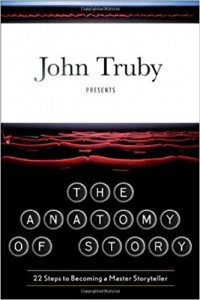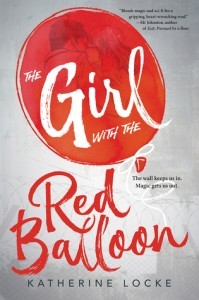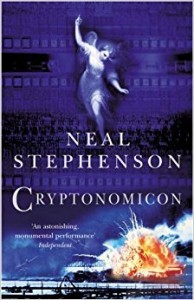Books Read in December & Yearly Roundup
 1. The Anatomy of Story – John Truby (I used this to assess my existing plot and stress-test for a better draft after getting notes from my agent. Not everything was helpful for me, but overall I definitely recommend it, especially for the stuff on character)
1. The Anatomy of Story – John Truby (I used this to assess my existing plot and stress-test for a better draft after getting notes from my agent. Not everything was helpful for me, but overall I definitely recommend it, especially for the stuff on character)
John Truby is one of the most respected and sought-after story consultants in the film industry, and his students have gone on to pen some of Hollywood’s most successful films, including Sleepless in Seattle, Scream, and Shrek. The Anatomy of Story is his long-awaited first book, and it shares all of his secrets for writing a compelling script. Based on the lessons in his award-winning class, Great Screenwriting, The Anatomy of Story draws on a broad range of philosophy and mythology, offering fresh techniques and insightful anecdotes alongside Truby’s own unique approach for how to build an effective, multifaceted narrative. Truby’s method for constructing a story is at once insightful and practical, focusing on the hero’s moral and emotional growth. As a result, writers will dig deep within and explore their own values and worldviews in order to create an effective story. Writers will come away with an extremely precise set of tools to work with–specific, useful techniques to make the audience care about their characters, and that make their characters grow in meaningful ways. They will construct a surprising plot that is unique to their particular concept, and they will learn how to express a moral vision that can genuinely move an audience.
2. Contact – Carl Sagan
For centuries humanity has dreamed of life and intelligence beyond the Earth; for decades scientists have searched for it in every corner of the sky; for years Project Argus, a vast, sophisticated complex of radio telescopes, has listened for a signal indicating the existence, somewhere in the universe, of extraterrestrial intelligence.
Then, one afternoon, the course of human history is changed, abruptly and forever. The Message, awaited for so long, it’s very possibility doubted by so many, arrives.
Contact has been made. Life, intelligence, someone, somethingbeyond Earth, 26 light-years away, in the vicinity of the star Vega, is calling, beaming across space a wholly unexpected message to say that we are not – have never been – alone.
 3. The Girl with the Red Balloon – Katherine Locke
3. The Girl with the Red Balloon – Katherine Locke
When sixteen-year-old Ellie Baum accidentally time-travels via red balloon to 1988 East Berlin, she’s caught up in a conspiracy of history and magic. She meets members of an underground guild in East Berlin who use balloons and magic to help people escape over the Wall—but even to the balloon makers, Ellie’s time travel is a mystery. When it becomes clear that someone is using dark magic to change history, Ellie must risk everything—including her only way home—to stop the process.
4. The Reindeer People – Megan Lindholm
The Reindeer People is the first in a series of reissues of Megan Lindholm’s (Robin Hobb) classic backlist titles. It is set in the harsh wilderness of a prehistoric North America, and tells the story of a tribe of nomads and hunters as they try to survive, battling against enemy tribes, marauding packs of wolves and the very land itself. Living on the outskirts of the tribe Tillu was happy spending her time tending her strange, slow dreamy child Kerlew and comunning with the spirits to heal the sick and bring blessing on new births. However Carp, the Shaman, an ugly wizened old man whose magic smelled foul to Tillu desired both mother and child. Tillu knew Carp’s magic would steal her son and her soul. Death waited in the snows of the Tundra, but Tillu knew which she would prefer Gritty and realistic, it’s reminiscent of Jean Auel’s Clan of the Cave Bear but written in the compelling style of the author who produced the bestselling Assassin’s Apprentice.
 5. Cryptonomicon – Neal Stephenson
5. Cryptonomicon – Neal Stephenson
Cryptonomicon zooms all over the world, careening conspiratorially back and forth between two time periods–World War II and the present. Our 1940s heroes are the brilliant mathematician Lawrence Waterhouse, crypt analyst extraordinaire, and gung-ho, morphine-addicted marine Bobby Shaftoe. They’re part of Detachment 2702, an Allied group trying to break Axis communication codes while simultaneously preventing the enemy from figuring out that their codes have been broken. Their job boils down to layer upon layer of deception. Dr. Alan Turing is also a member of 2702, and he explains the unit’s strange workings to Waterhouse. “When we want to sink a convoy, we send out an observation plane first… Of course, to observe is not its real duty–we already know exactly where the convoy is. Its real duty is to be observed… Then, when we come round and sink them, the Germans will not find it suspicious.”
All of this secrecy resonates in the present-day story line, in which the grandchildren of the WWII heroes–inimitable programming geek Randy Waterhouse and the lovely and powerful Amy Shaftoe–team up to help create an offshore data haven in Southeast Asia and maybe uncover some gold once destined for Nazi coffers. To top off the paranoiac tone of the book, the mysterious Enoch Root, key member of Detachment 2702 and the Societas Eruditorum, pops up with an unbreakable encryption scheme left over from WWII to befuddle the 1990s protagonists with conspiratorial ties.
6. Getting Started in Young Adult Fiction – Juliet Mushens (re-read for course I’m teaching on YA fiction next trimester)
Practical guidance, advice and tips to make your Young Adult Fiction writing stand out and get noticed.
This is an authoritative and engaging introduction to writing young adult fiction for the complete beginner. It will help you understand how the genre works, the big do’s and don’t’s – as well as giving you the inspiration and motivation you actually need to write. Written by a leading literary agent who knows what it takes to make it in this market, this book will give you the advice and tips you need to stand out. An essential book for anyone hoping to emulate the success and addictive qualities that characterize books like The Hunger Games, Twilight, Divergent and The Fault in Our Stars.
Total this year: 91 books
Loose reading goals for this month:
Read more romance: The Girl with the Red Balloon, partly
Re-read some old favourites: Getting Started in YA Fiction
Read more classics: Contact, Cryptonomicon
Continue to read diverse books/books by marginalised authors: The Girl with the Red Balloon
Read nonfiction: Getting Started in YA Fiction
Read women: The Girl with the Red Balloon, the Reindeer People, Getting Started in YA Fiction
This year:
Romance: 13 or so
Re-reads: 8
Classics (which I basically just define as very well-known older books): 11
Continue to read diverse books/books by marginalised authors: Hard to know for certain, but around 26?
Nonfiction: 16
Read women: 61



